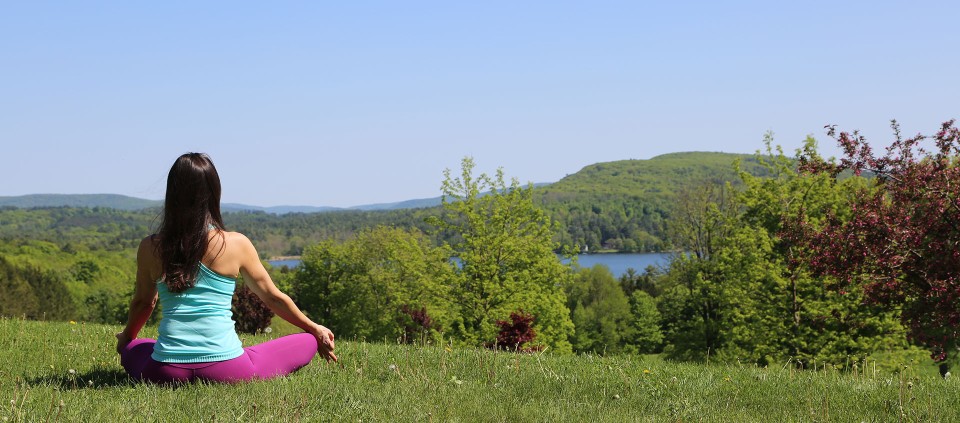Yoga, Mindfulness, and Seeing Clearly

To explain the skills of yoga to new teachers, I sometimes tell the story of Galileo and how he used a set of lenses to observe the movement of the stars, leading to a number of insights about the size and shape of the earth. We can use the skills of yoga in much the same way Galileo used his lenses.
In yoga, we have three primary lenses: kindness, concentration, and non-attachment. Each of the primary lenses has a number of secondary lenses. For example, under kindness, you will find non-harming, compassion, joy, and equanimity. By combining these primary and secondary lenses properly, we can see with remarkable clarity into the nature of our own experience. This subtle action is called wise effort.
The Space Between
Once we have learned the art of wise effort, we are able to look deeply into the nature of looking itself. We see how we are not really seeing at all. Rather, we are labeling things and reacting to our labels. By combining kindness, concentration, and non-attachment, we are able to see that the labeling process belongs to the part of our mind that creates images in an attempt to understand the world. These images are accompanied by thoughts that create stories.
The images and stories move together to create a temporary self, in a temporary reality, in an effort to gain a temporary benefit. This swirl of images and stories gives us a glimpse of why the yogis felt that there had to be a benefit in seeing without all the mental movement. At this point, we begin to practice in earnest. But unlike Galileo, whose focus was on the stars, ours is on the space between them.
The Attachment to Non-Attachment
When Galileo adjusted the lens of his telescope, he changed what he was able to see. When we practice yoga, we adjust our mental states to be able to see more clearly. We begin by adjusting our physical state to bring our mind into calm, clear connection with the present moment. This attunement of the physical body is a verb, not a noun; it is a continual process of refinement. Like a tightrope walker, there is no moment when we stop balancing.
As we learn to balance the body in a way that stills the mind, we become able to feel the difference between the mind in contracted movement and the mind in connected stillness. Watching the mind shift back and forth from stillness to movement gives us a chance to feel our emotional reactions to both states.
If you are anything like me, you will start to become attached to stillness and averse to the chaos of mind-made images and stories. These emotional reactions become a new form of suffering. Your quest for non-attachment will yield a new attachment. A period of denial, frustration, and suffering will ensue, but you will eventually develop a new lens: self-compassion. You will decide to be kind to yourself as you watch the mind doing what it has done for thousands of years.
Understanding the Nature of the Mind
Balancing the body in a way that brings stillness to the mind begins the process of self-inquiry. From the experience of a still, spacious mind, we are able to understand the nature of a moving, busy mind. Watching closely over time, we are able to see how everything is connected and happening more or less at the same time.
Our mental movement is accompanied by an emotional reaction, which is accompanied by a physical reaction. If we move our body in a hurried manner, we start to experience an anxiety that makes it hard to think straight. As this understanding deepens, we see how the skills of yoga can affect our experience. How a posture is a state of mind. How kindness is a state of mind. The way a slow, deep breath changes our point of view.
Observing cause and effect as it relates to our mental, emotional, and physical experience explains the role that practice plays in improving our quality of life. If we practice skillful states of body, mind, and heart, we will feel them at every level of our being.
Find out about upcoming programs with Rolf Gates at Kripalu.
Rolf Gates, author of Daily Reflections on Addiction, Yoga, and Getting Well; Meditations from the Mat; and Meditations on Intention and Being, is a leading voice of in contemporary yoga.
Full Bio and Programs